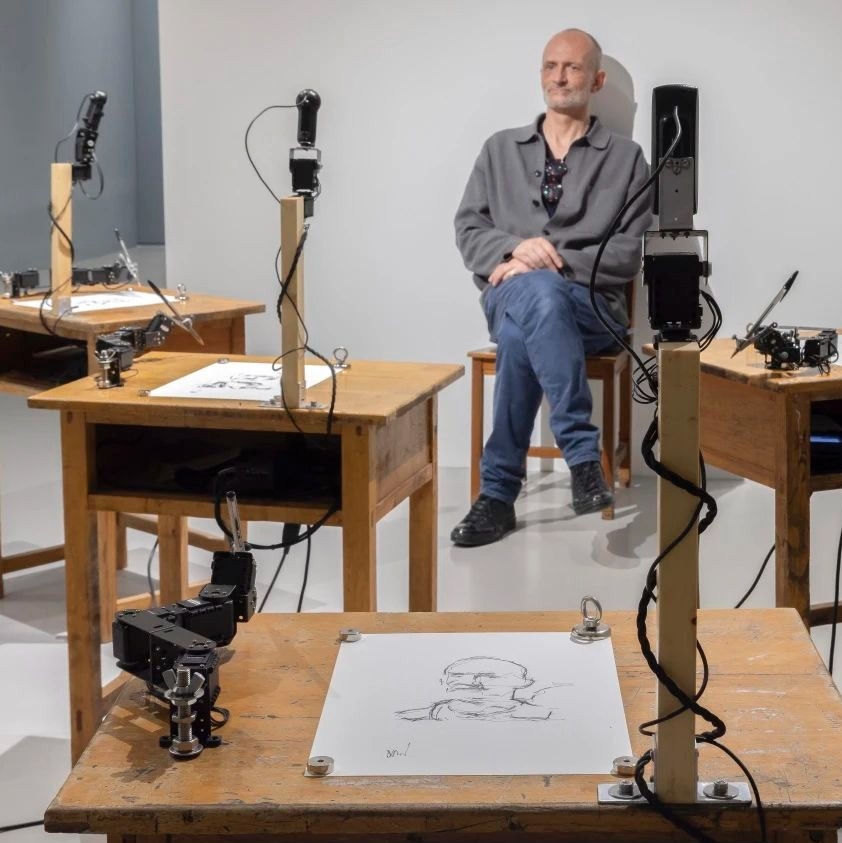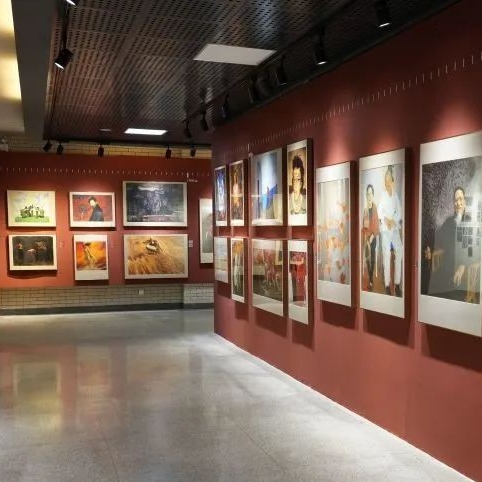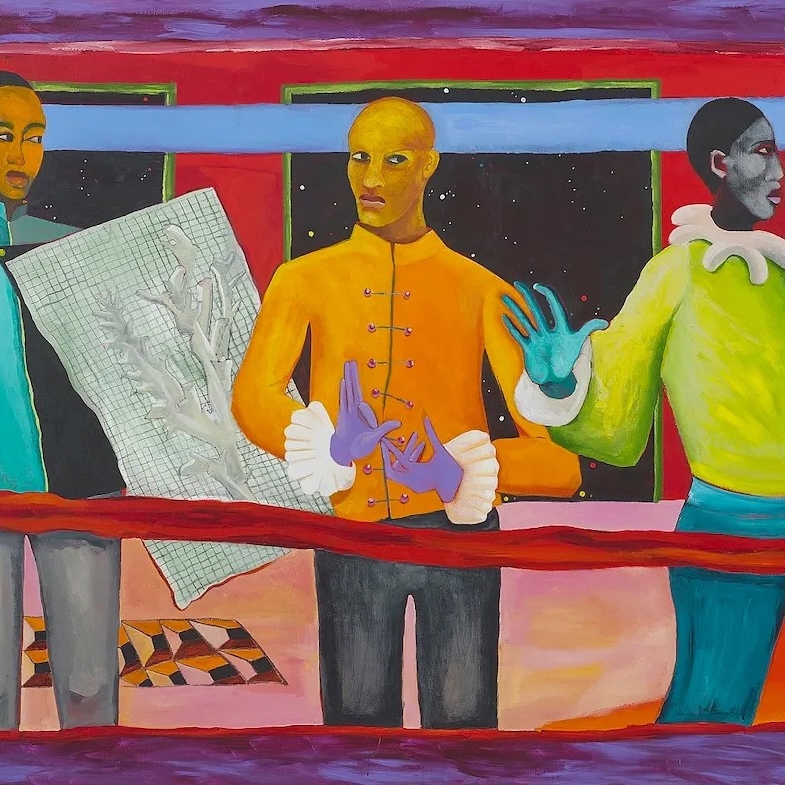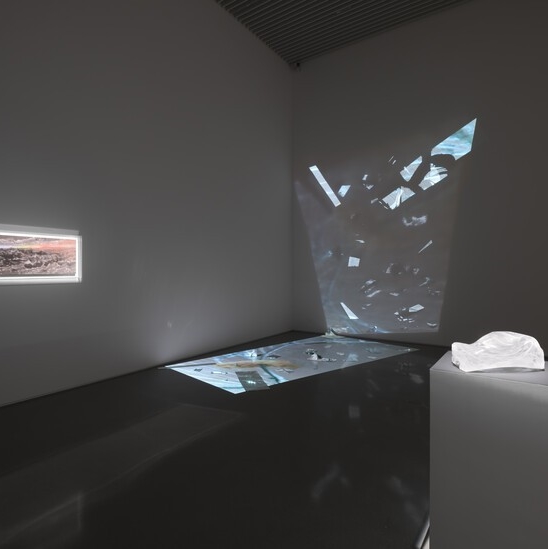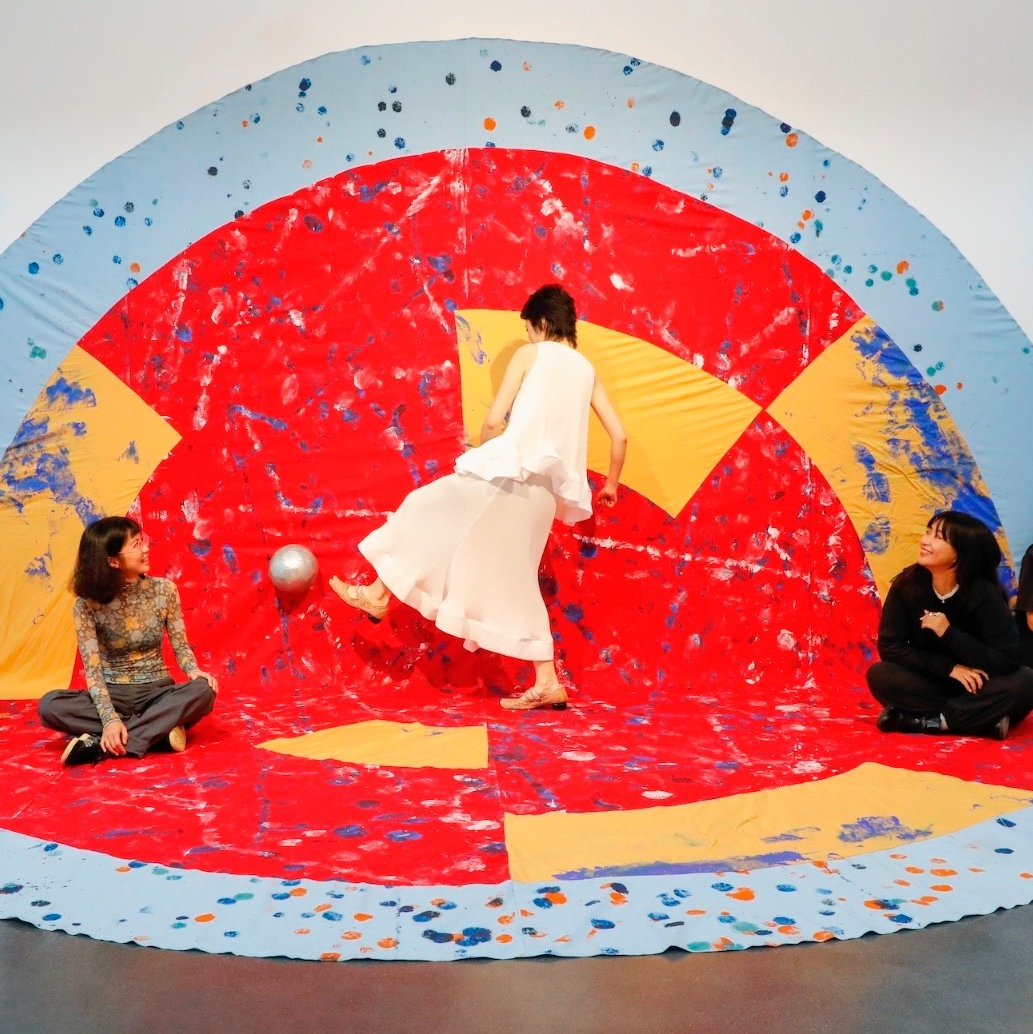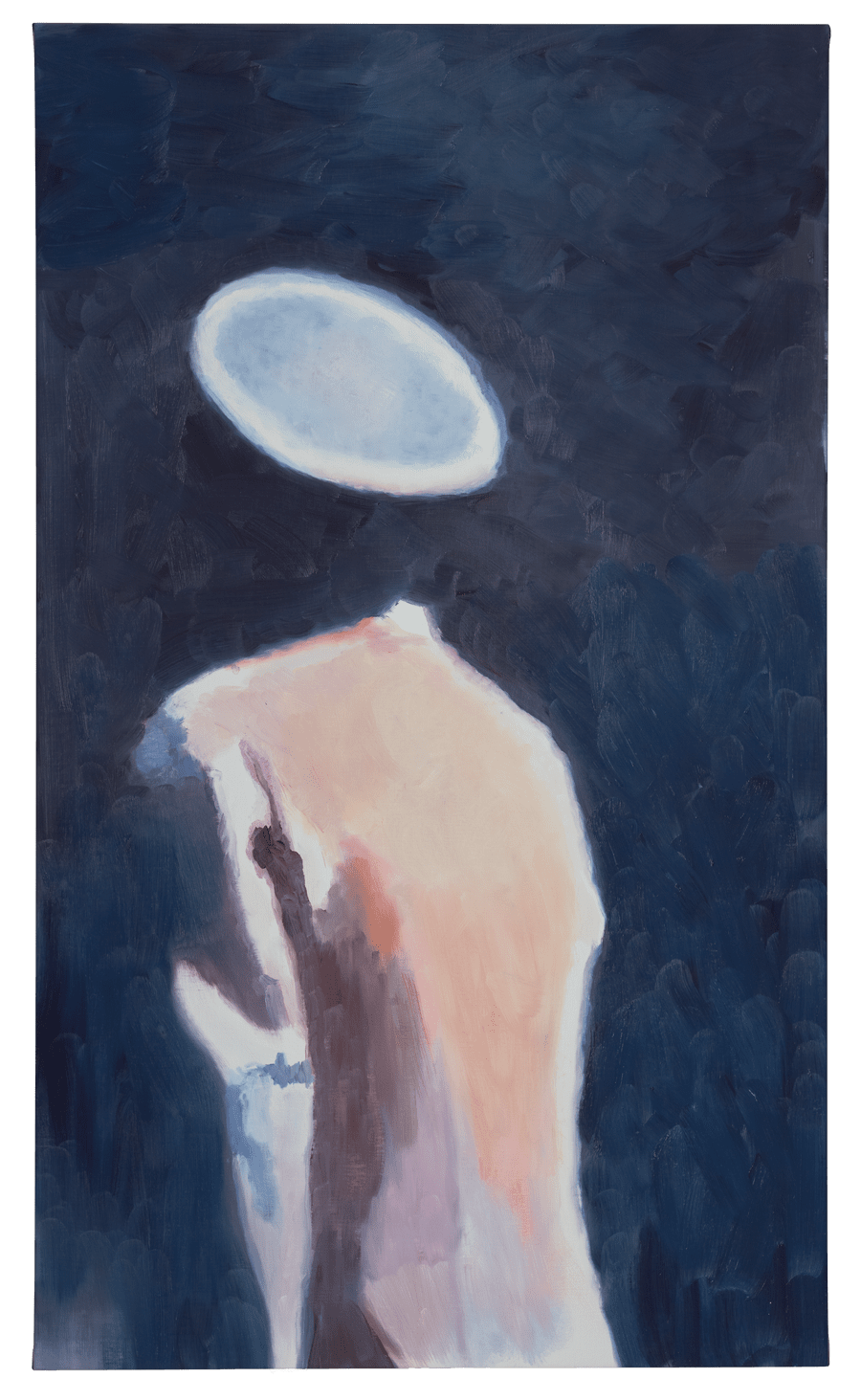
Bell Boy, 2023. Oil on canvas, 157.2x93.2cm collection museum Voorlinden, Wassenaar, The Netherlands.
Photograph Studio Luc Tuymans. Courtesy the artist and David Zwirner.
UCCA Center for Contemporary Art announces“Luc Tuymans: The Past”is presented between November 16, 2024, and February 16, 2025. It provides one of the most significant surveys of the acclaimed Belgian artist, with 87 works spanning his career created between 1975 and 2023. The exhibition offers a profound exploration of Tuymans’s distinctive approach to painting as well as his nuanced, and often haunting, approach to history. Curated by Peter Eleey, UCCA Curator-at-Large, in close collaboration with the artist, this landmark exhibition includes some of his best-known paintings alongside those rarely seen.
One of the most important painters working today, Luc Tuymans is known for his restrained palette and complex use of preexisting imagery, with subjects ranging from ordinary objects to figures and events of enormous consequence. Working quickly, he typically paints every picture in the course of a single day, creating seductive and carefully worked surfaces that pull viewers into each painting, while disclosing little about his interest or purpose. With his now-defining style of a faded, almost photographic quality, Tuymans has captivated viewers worldwide and left an indelible mark on subsequent generations of artists, including many in China who first encountered his work in the 1990s.
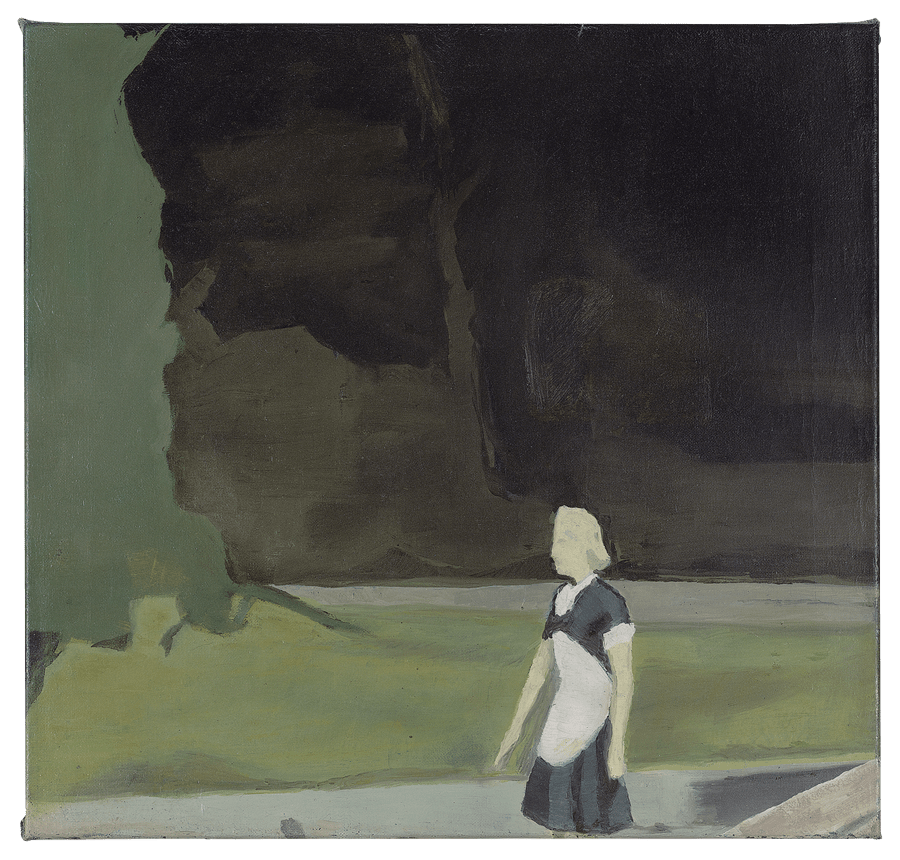
The Servant, 1990. Oil on canvas, 51.2x53cm. Private Collection, long-term loan to S.M.A.K. Ghent.
Photograph Studio Luc Tuymans. Courtesy the artist and David Zwirner.
First rising to prominence in 1980s Europe, Tuymans drew from the grand ambitions of Northern Renaissance painting and the media-dominated pop culture of his youth in Belgium in the period after World War II. He first began painting in the late 1970s, and made a brief switch to filmmaking between 1980-1985, before returning to painting. During this period, the West witnessed a critical recuperation of painting, although the trend was mainly expressionist, large, and saturated with content. In contrast, Tuymans pursued a more modest scale and touch, yet with equal ambition. He has explained, “from very early on, my work was born out of an insane and very profound distrust of imagery.” This skepticism towards imagery continues to inform his practice today, particularly in an era dominated by digital and manipulated photography. Early in his career, this distrust led him to experiment with what he called “authentic forgery,” creating paintings that he intentionally aged by applying varnishes that would crack. This lends the works a patina that suggests they belong to an earlier time, highlighting the “archaic” quality of painting as a medium, while simultaneously engaging with its enduring power to shape memory and history. His work speaks to the complex state of contemporary life, and examines the role of painting itself in reflecting the world back to us.
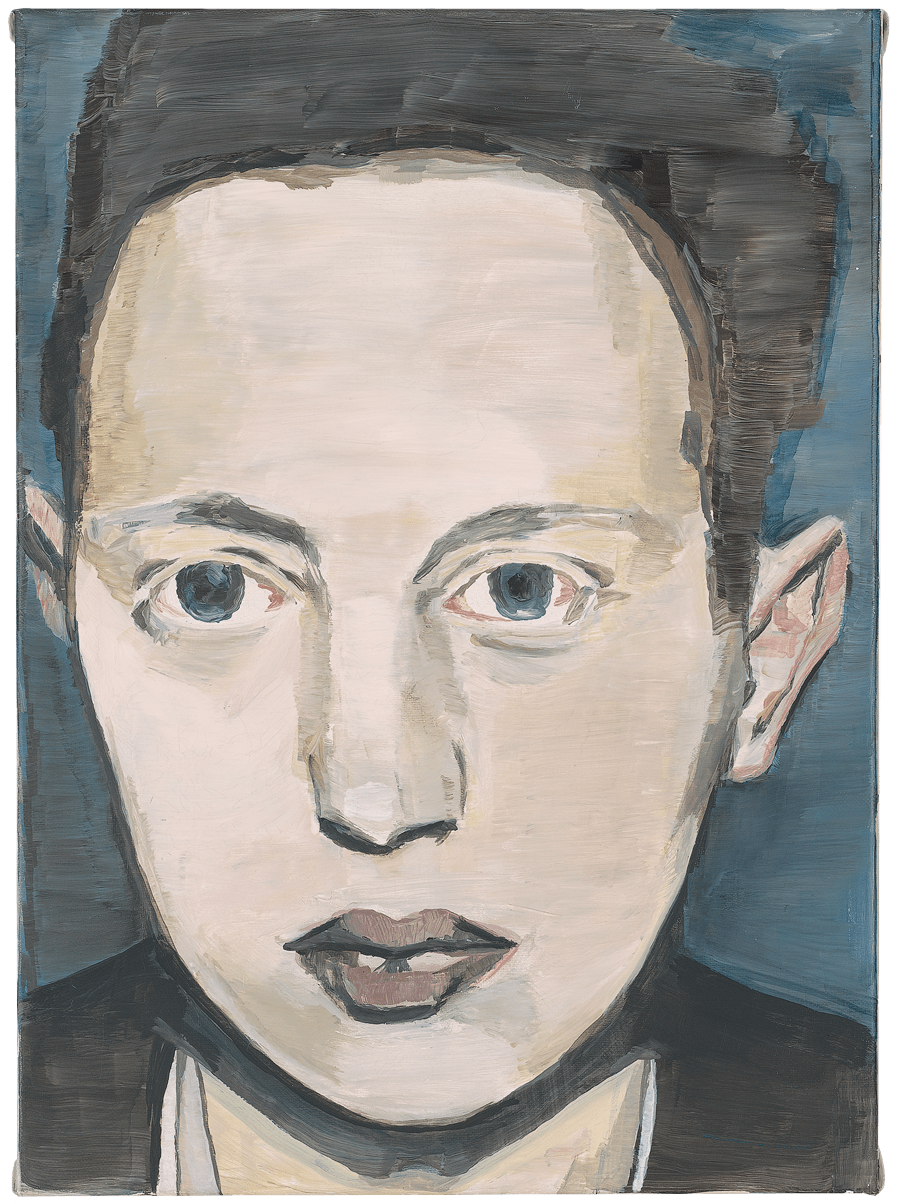
Der diagnostische Blick V (The Diagnostic View V), 1992. Oil on canvas, 57.9x42.3cm. Private Collection. Photograph Studio Luc Tuymans. Courtesy the artist and David Zwirner.
A keen explorer of cultural heritage and exchange, Tuymans often considers how traditions from both East and West commingle. The exhibition highlights his longstanding engagement with China, a country that has captivated him for many years. He has curated two exhibitions in China: “The Forbidden Empire: Visions of the World by Chinese and Flemish Artists” at The Palace Museum in Beijing (2007), which also traveled to the Palais des Beaux-Arts in Brussels, Belgium; and “The State of Things” (2009), an exhibition of Chinese and Belgian contemporary artists, which traveled from Brussels to the National Art Museum of China. Reflecting on his experiences, Tuymans remarked, “In China, culture has a completely different resonance than in the West, one that goes back to the emperors and connects to an ancient lineage.”
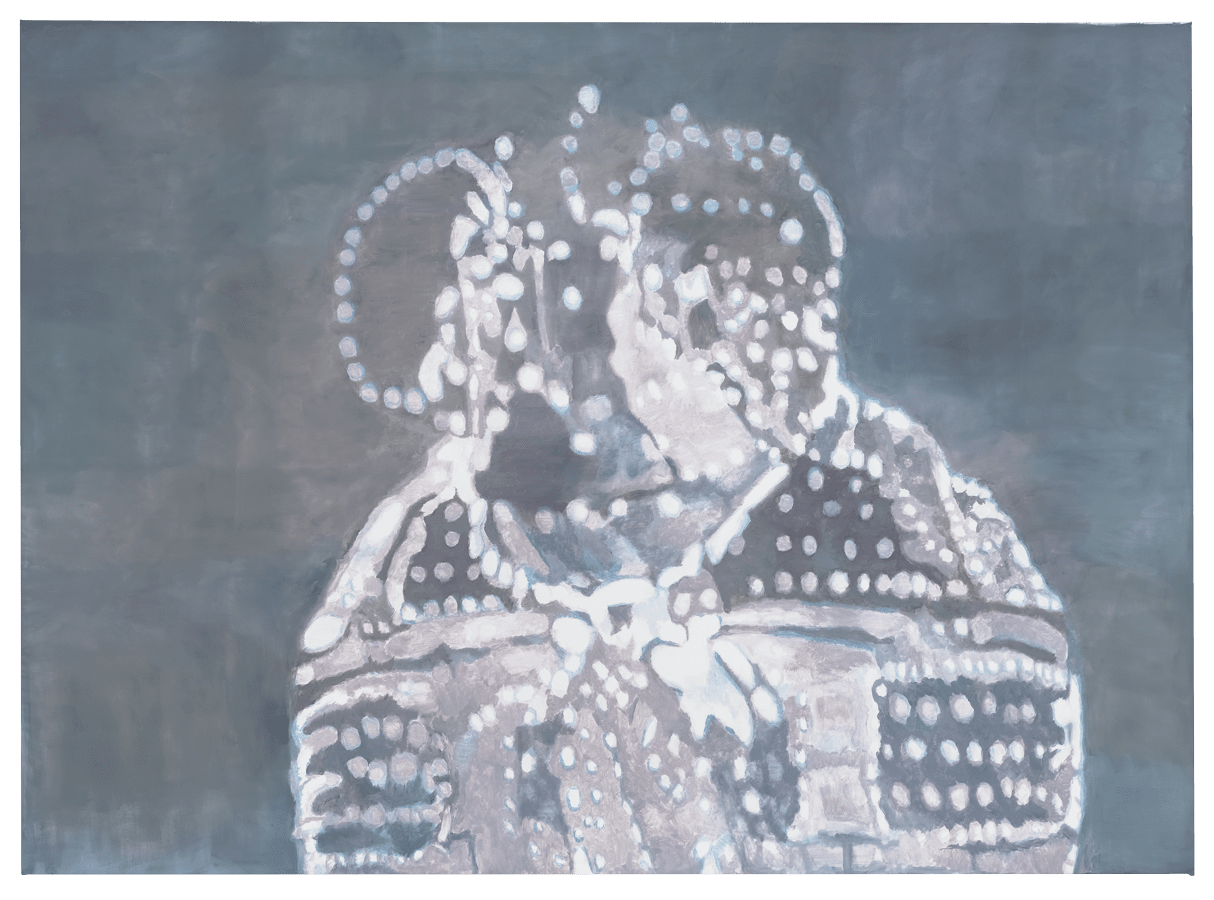
Turtle, 2007. Oil on canvas, 3.48x5.09m. Private Collection, courtesy David Zwirner.
Photograph Studio Luc Tuymans. Courtesy the artist and David Zwirner.
In an exploration of China’s ancient past and modern present, Tuymans’s Morning Sun (2003), portrays a scene instantly recognizable to Chinese viewers. At the center of the composition, framed by a dark circular structure, stands the iconic Oriental Pearl Tower, surrounded by the skyscrapers of Shanghai’s Pudong New Area. The title Morning Sun is an indication that the photograph, which first appeared in the Financial Times, was taken at dawn, but it also alludes to China’s rapid ascent. At that time, the country had just joined the World Trade Organization and was experiencing major economic growth, alongside extensive urban renewal efforts in preparation for the 2008 Summer Olympics in Beijing. The photograph itself was taken from the Garden Bridge, a century-old steel bridge symbolizing the beginning of Shanghai’s modernization and industrialization. The circular frame along the edges of the composition likely represents the bridge’s structure, which acts as a telescope for witnessing the nation in a broad sense, as well as Shanghai, at that pivotal historical moment.
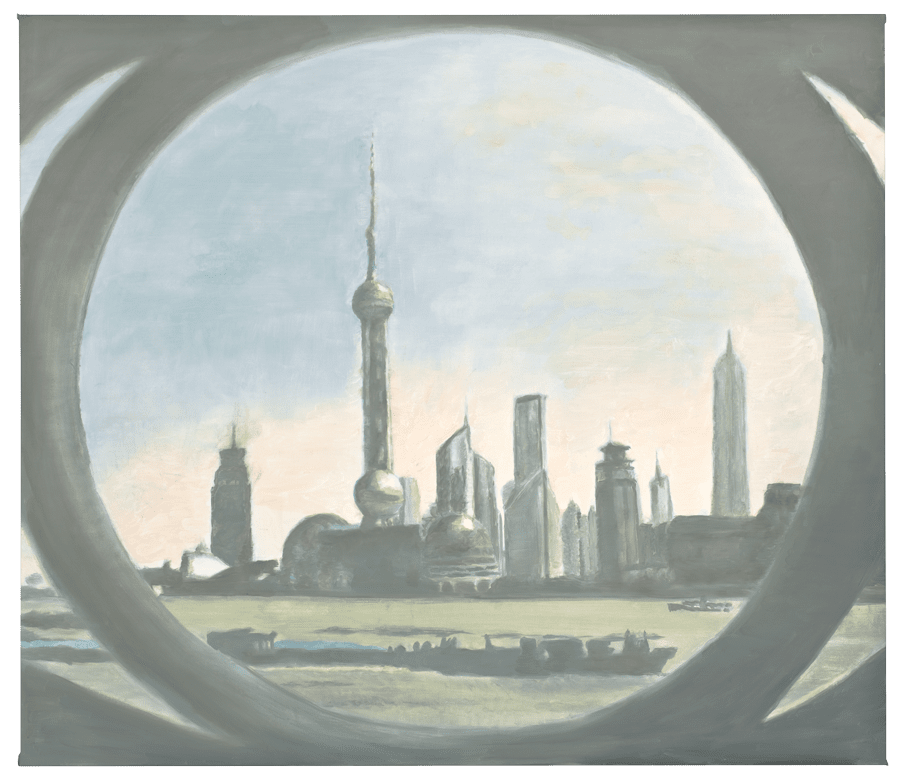
Morning Sun, 2003. Oil on canvas, 156x180cm.
Private Collection, courtesy David Zwirner Photograph, Josh White.
Courtesy the artist and David Zwirner.
Another consistent theme throughout Tuymans’s career is portraiture, ranging from faces of nameless individuals in medical textbooks, historical figures reduced to symbols within broader political narratives, or composite, anonymous subjects. The Nose (2002) is based on an image of a man that the artist subtly altered, transforming his smile into an ambiguous expression of both sorrow and solemnity. Tuymans has described this figure as “almost Christlike,” as it stylistically references a genre of religious painting that emphasizes Jesus’s humanity and suffering. He painted the work shortly after the 9/11 terrorist attacks in the United States and has noted that the man’s physiognomy could seem to be Middle Eastern. The subject’s indistinct identity in fact seems significant, given the heightened sense of threat that Westerners assigned to certain ethnicities during the period after the attacks. The painting first appeared in print before being exhibited, and was used as the cover of a major Phaidon monograph on the artist published in 2003. A Chinese version of the book, widely circulated, helped to introduce Tuymans’s work to viewers in China.
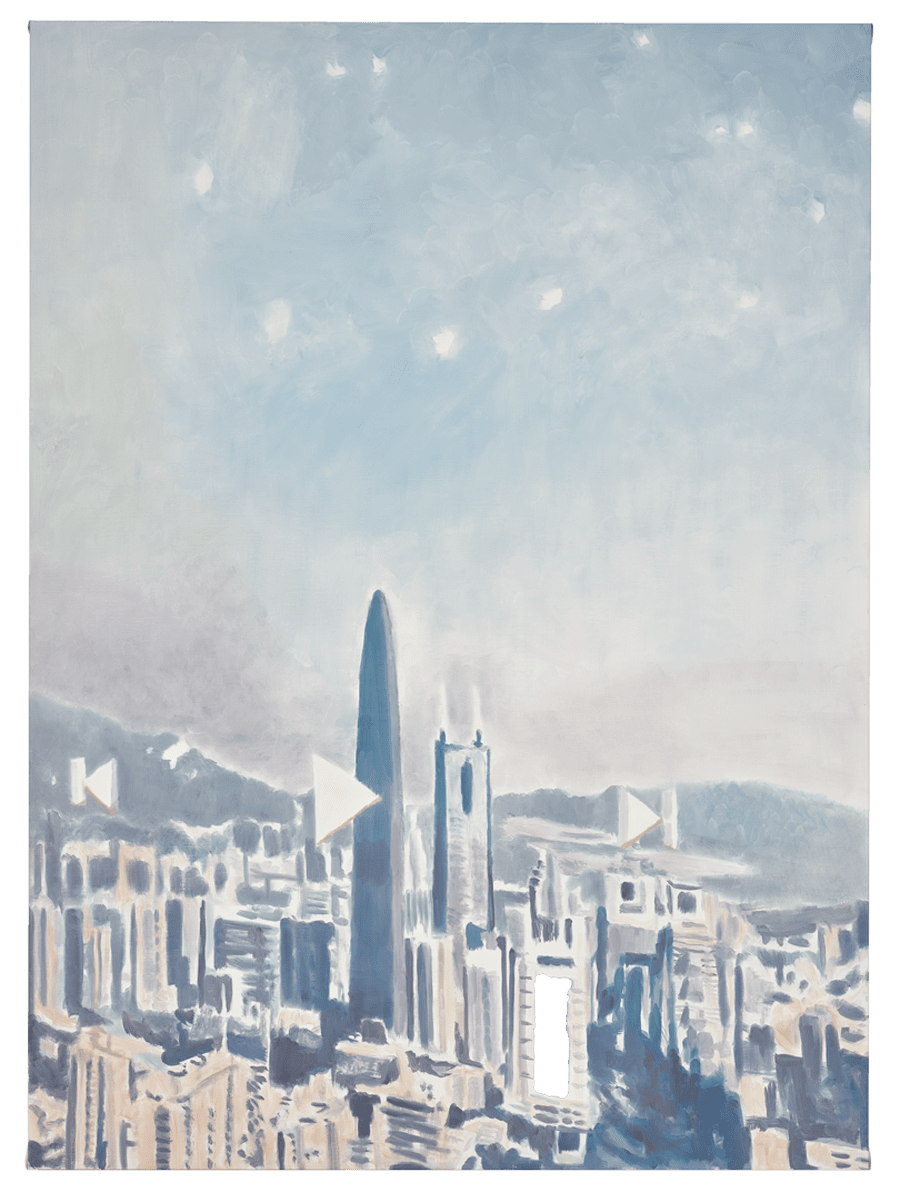
Shenzhen, 2019. Oil on canvas, 213.2x156.4cm. Private Collection. Photograph Studio Luc Tuymans. Courtesy the artist and David Zwirner.
Tuymans has long had a fascination with film and cinematic visual narratives, evident in a group of paintings from his 1990 exhibition “Suspended.” Unlike his late 1980s works, which are often devoid of human figures, this series presents everyday scenes with people in seemingly familiar settings, such as by a swimming pool or in front of a house. With raking, dramatic light, this series recalls the American painter Edward Hopper (1882-1967), whom Tuymans admires. On closer inspection, the figures appear almost petrified, like plastic toys carefully arranged in a diorama—which, in fact, were the artist’s sources. While these scenes may evoke the idyllic suburbia of midcentury Hollywood, they also convey an unsettling sense of artificiality and disconnection. The titles hint that their peaceful facades are deceptive, suggesting an underlying menace or impending catastrophe.
“Since my way of working begins with questioning and a desire to be informed by history,” Tuymans said in 2015, “I hope the legacy [of my work] will be the concept of memory, and ultimately an understanding of the inadequacy of memory. I think we lose sight of this today, in part because of the role that photography plays in our daily lives and how we process and understand our culture almost entirely through visual means, and in fact, in mass media this is a predominantly photorealistic means. But I think the way these paintings work with time is completely different since it is connected to their physicality, which is also something I hope viewers can relate to.”
Engaging both the grand sweep of history and the mundane details of daily life, Tuymans’s work explores the unsteady power of images to shape the present and give form to the past. “Luc Tuymans: The Past” invites viewers to experience this duality firsthand.
About the Artist
Luc Tuymans (b. 1958, lives and works in Antwerp, Belgium) has been the subject of numerous solo exhibitions worldwide, including those held at Louvre Museum (Paris, 2024); Palazzo Grassi (Venice, 2019); De Pont Museum (Tilburg, The Netherlands, 2019); Museum aan de Stroom (MAS; Antwerp, 2016), which traveled to the National Portrait Gallery (London, 2016); Qatar Museums Gallery – Al Riwaq (Doha, 2015); Menil Collection (Houston, 2013); the Wexner Center for the Arts (Columbus, Ohio, 2009), which traveled to San Francisco Museum of Modern Art, Dallas Museum of Art, Museum of Contemporary Art Chicago, and BOZAR – Palais des Beaux-Arts (Brussels); and Tate Modern (London, 2004), which traveled to K21 Kunstsammlung Nordrhein-Westfalen (Düsseldorf). As a curator, Tuymans has organized a number of exhibitions, including “The Forbidden Empire: Visions of the World by Chinese and Flemish Artists” (The Palace Museum, Beijing, 2007). He has received numerous awards and honors, including the Medal of Honor, International Congress of Contemporary Painting (ICOCEP; Porto, Portugal. 2019); the Coutts Contemporary Art Foundation Award (Zurich, 2000); and the Flemish Culture Award for Visual Arts (1993). The artist’s work features in museum collections worldwide, including the Centre Georges Pompidou (Paris), The Museum of Modern Art (New York), The National Museum of Art (Osaka), Pinakothek der Moderne (Munich), Pinault Collection, and Tate (London).
About the Exhibition
Dates: 2024.11.16 - 2025.2.16
Venue: UCCA Center for Contemporary Art, Beijing
Courtesy of UCCA Center for Contemporary Art.


